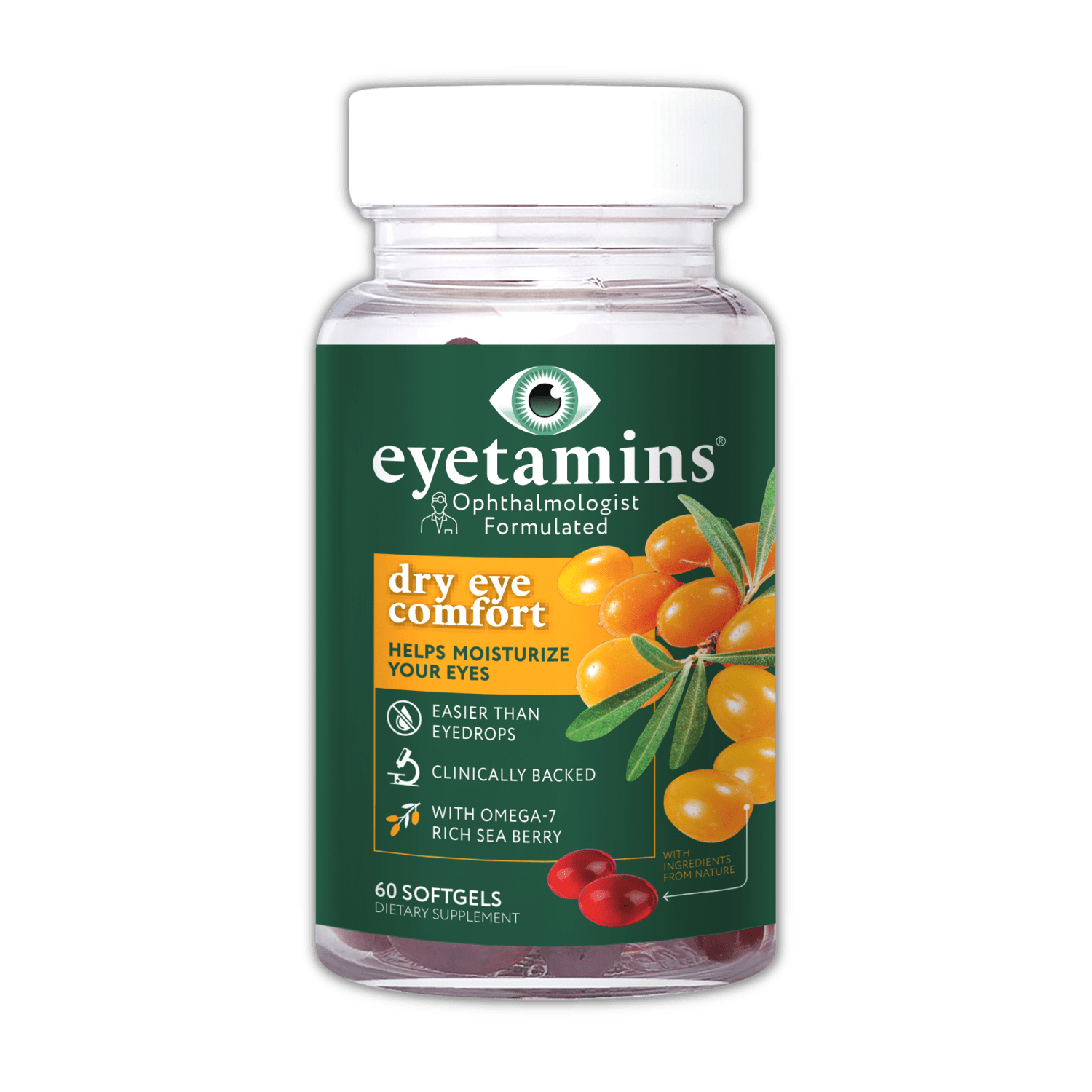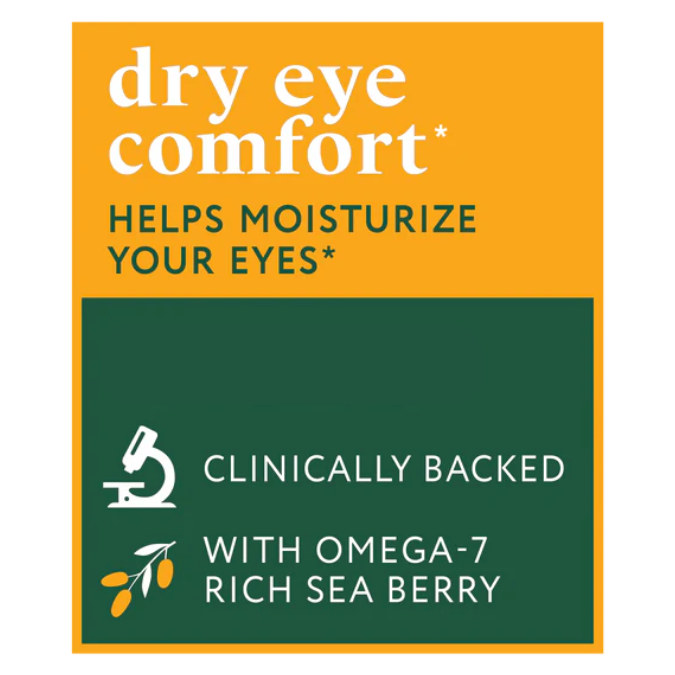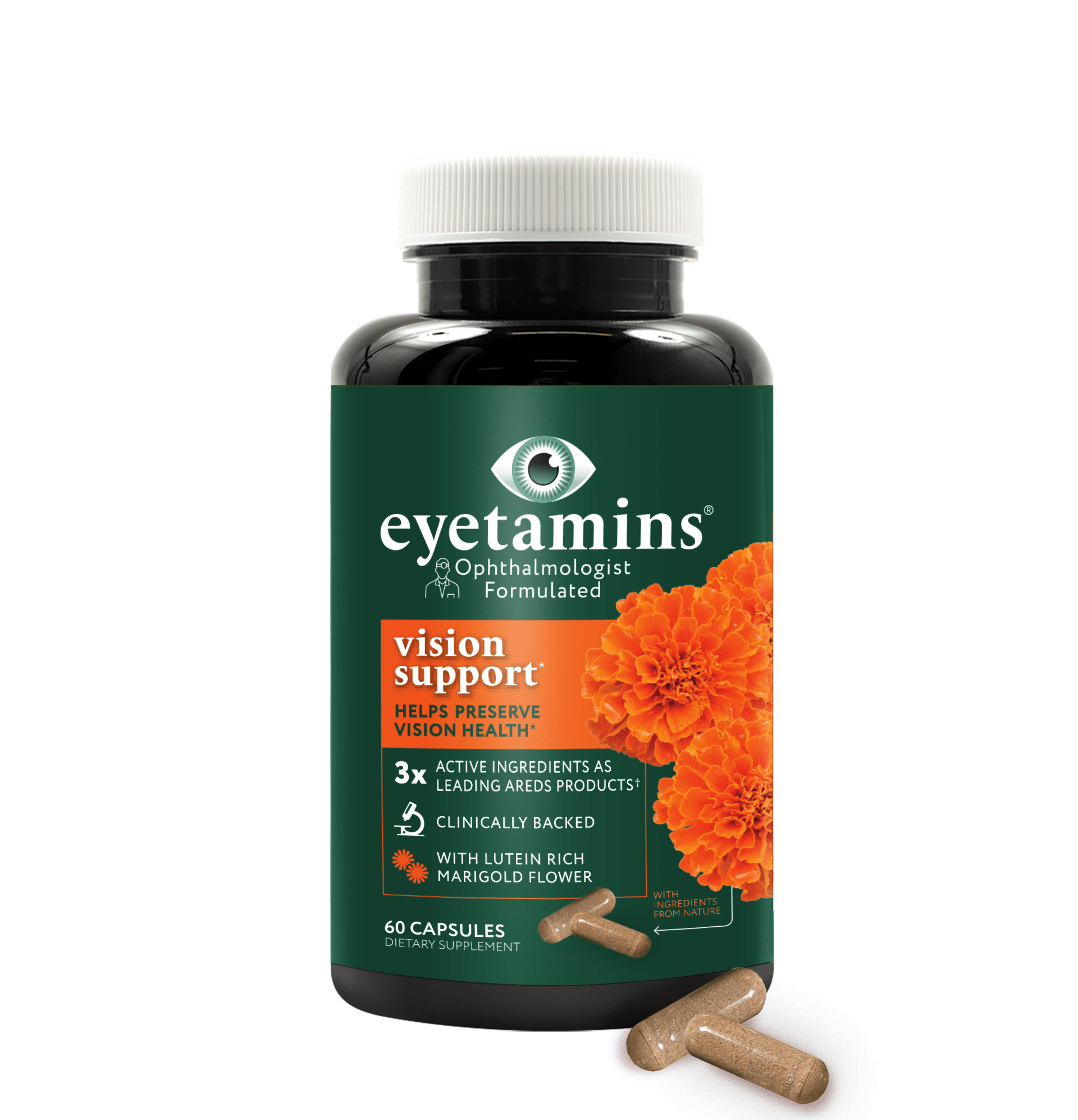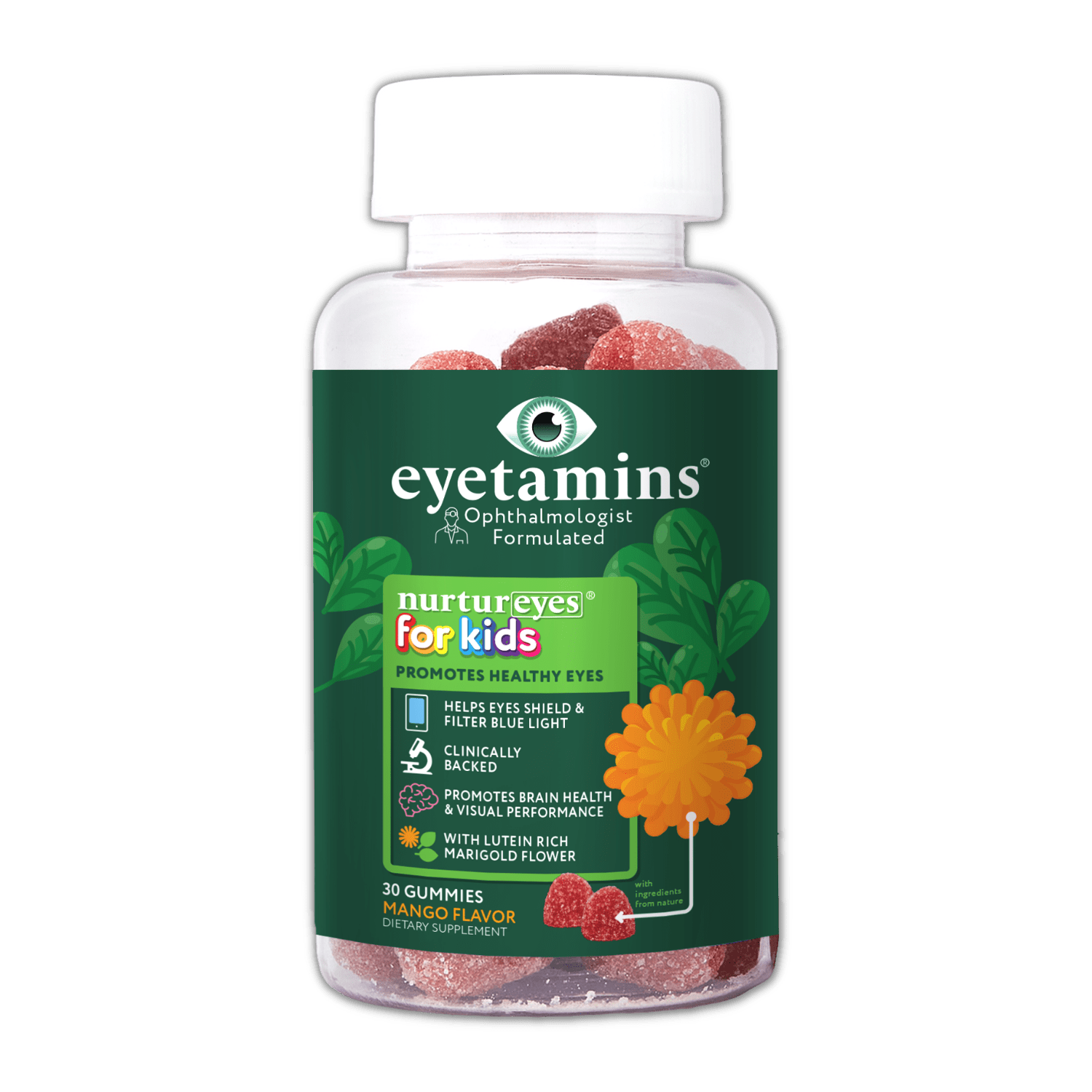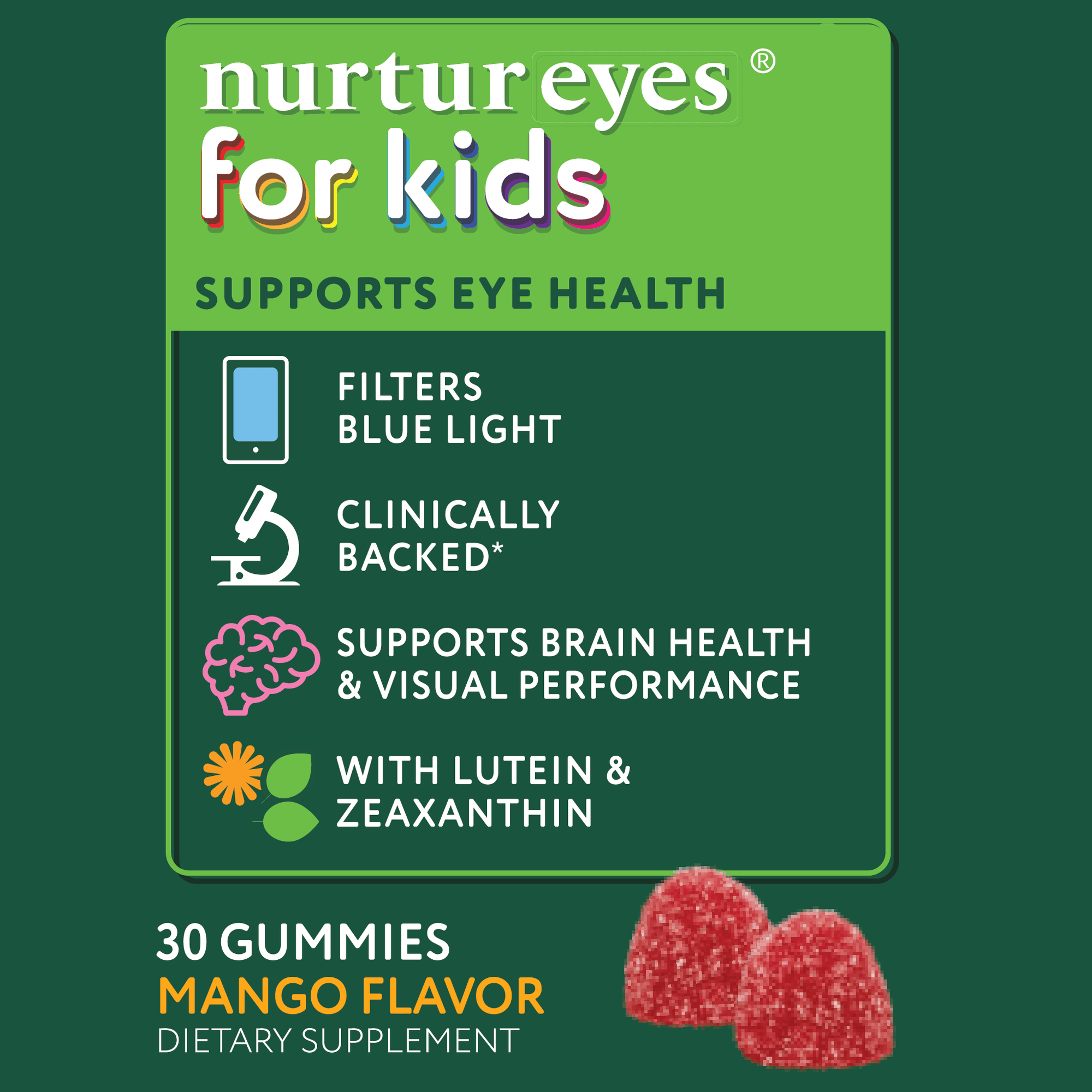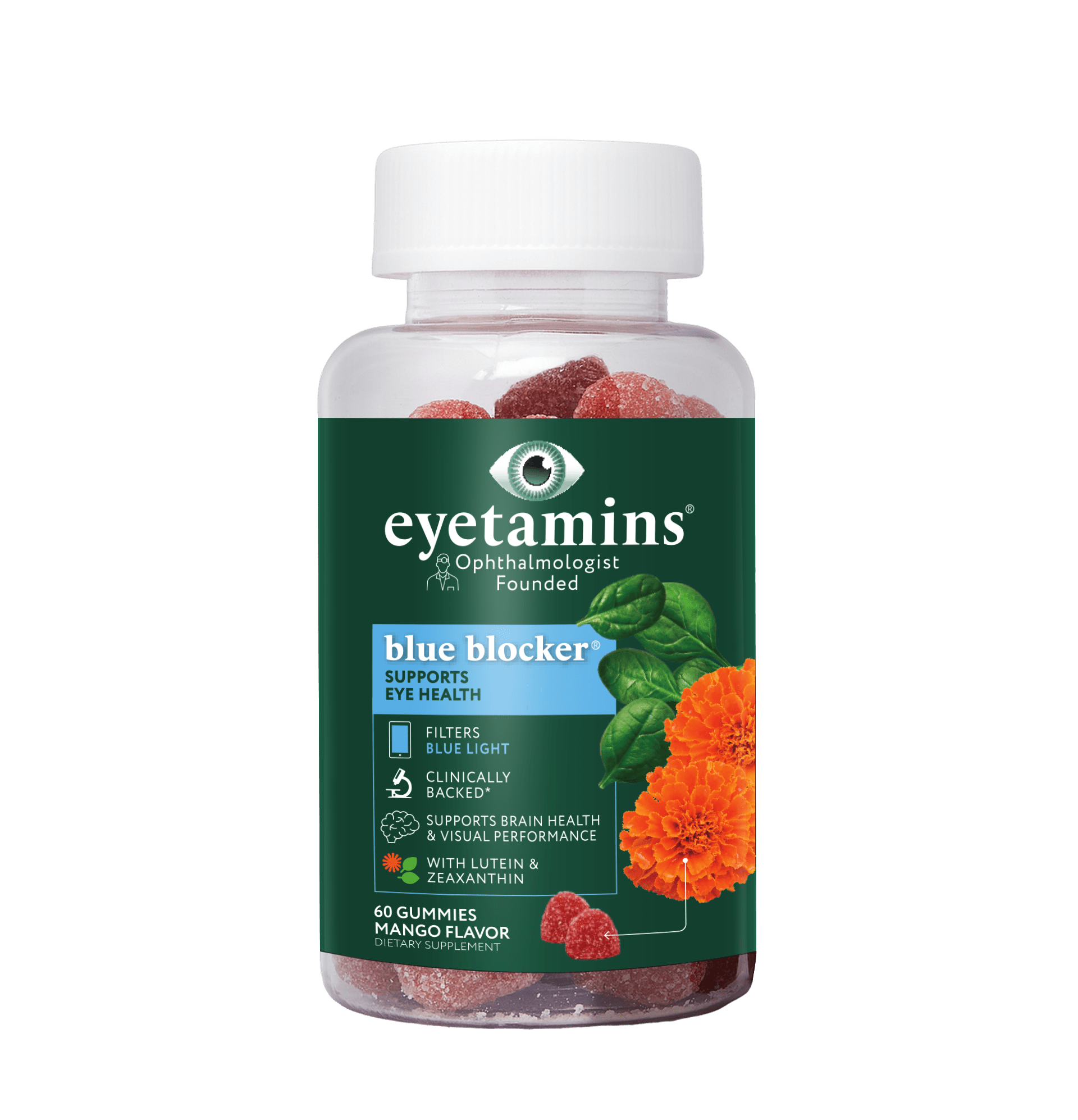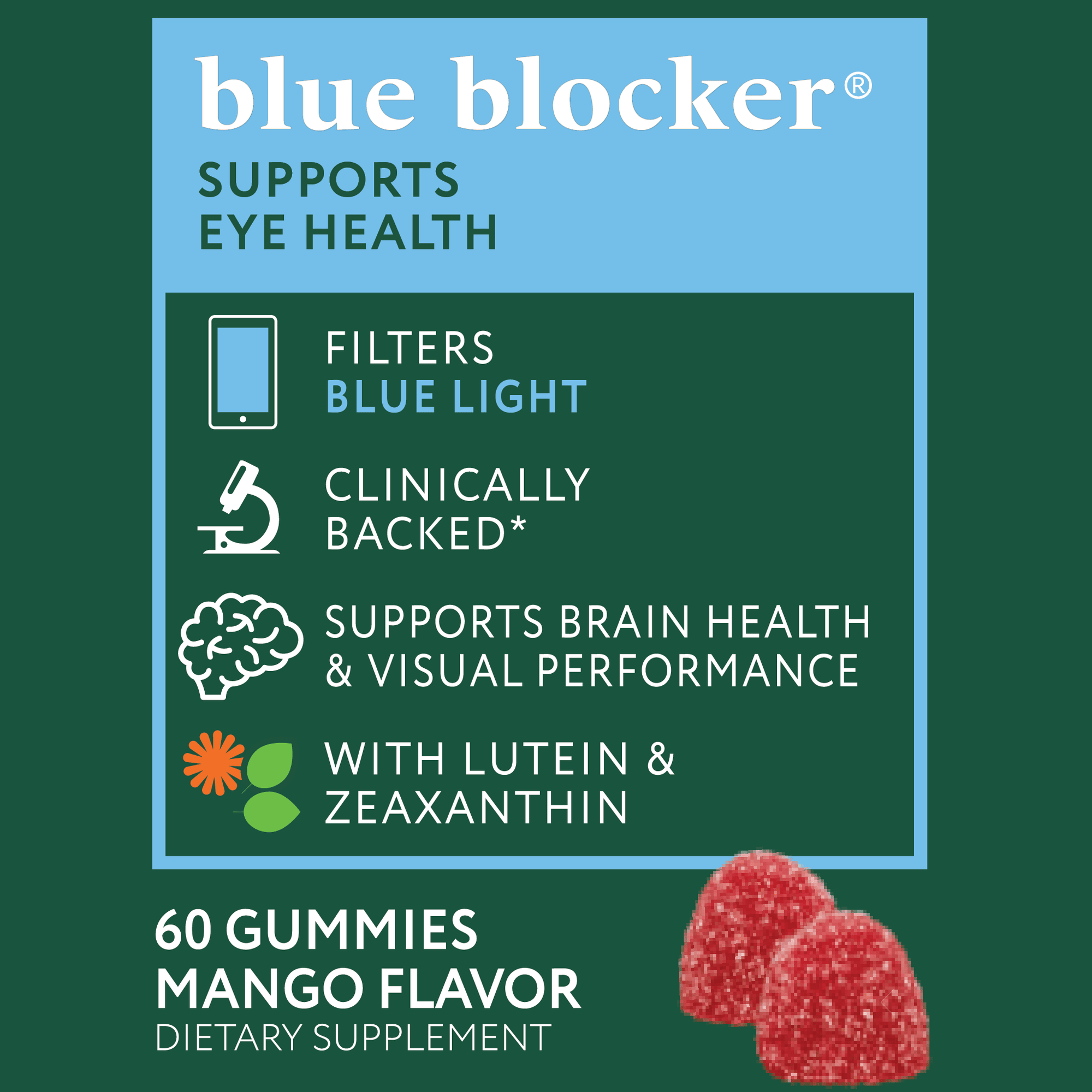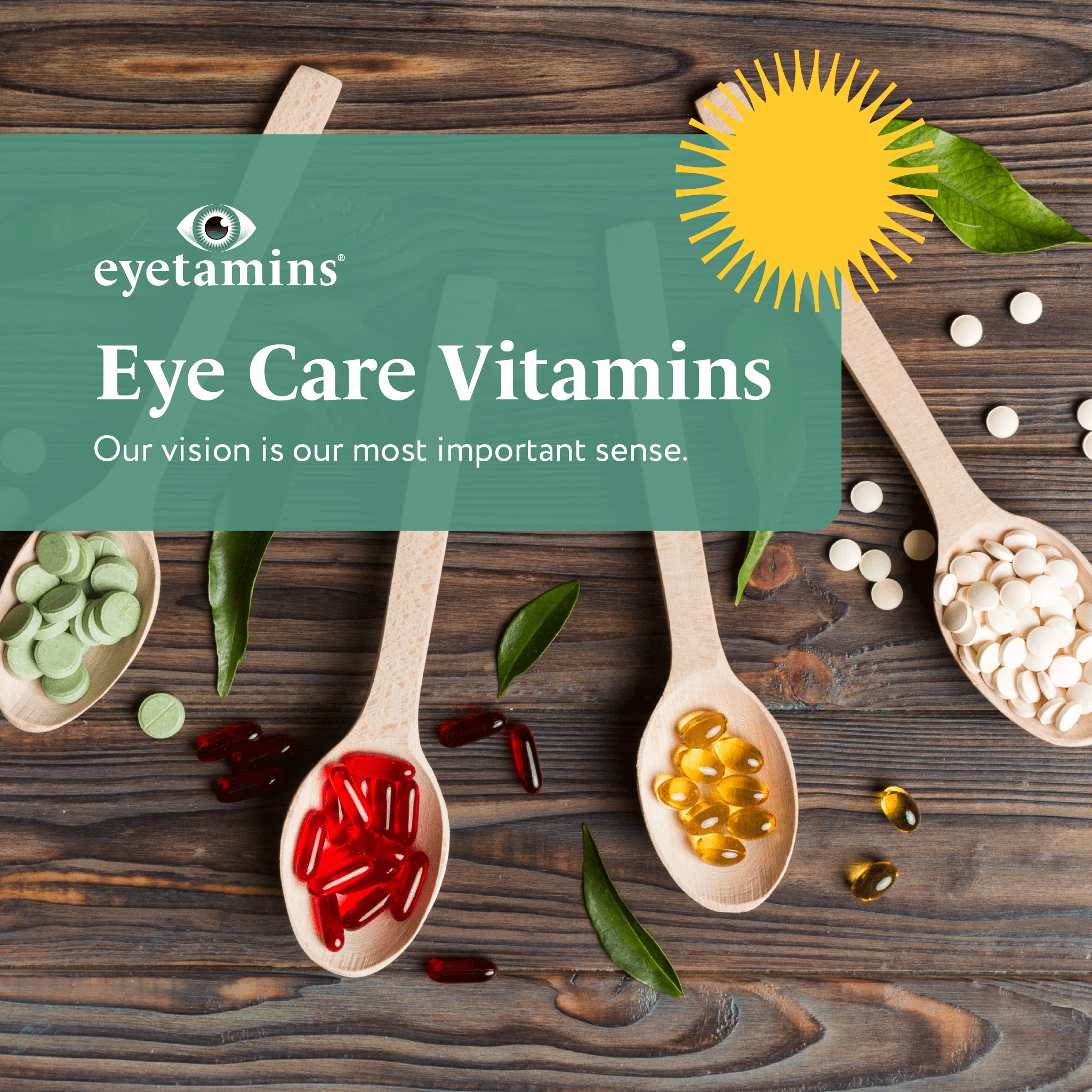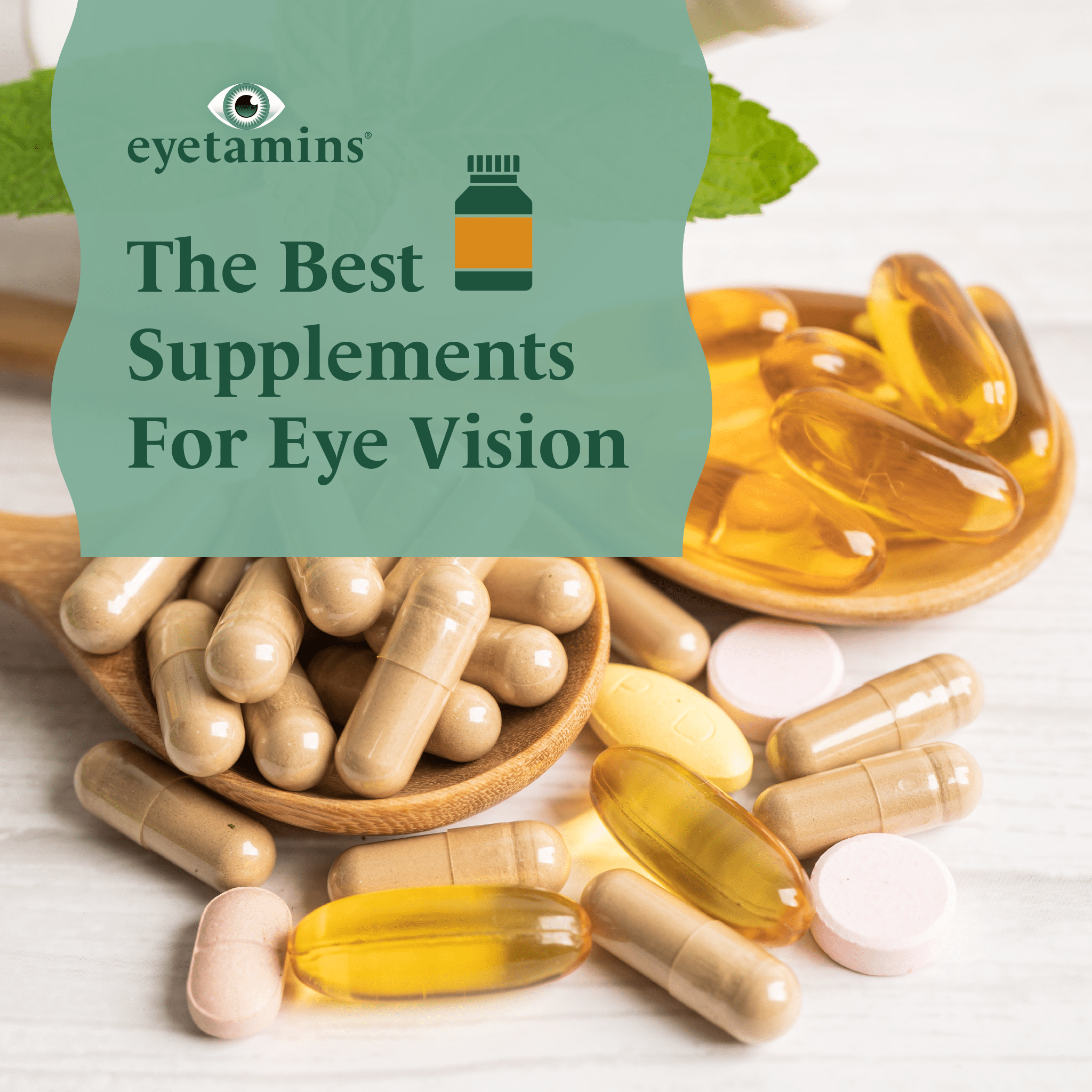· By Dr. Kaushal M. Kulkarni, M.D.
3 Reasons to Use Omega for Dry Eyes
The stinging, itchy, burning misery of dry eyes can seem like an inescapable cycle. Your artificial tear drops may give momentary relief, but oh-so short-lived.
Depending on the severity of your symptoms, you may need to look at some other options. One possible solution is omega fatty acids. In this article, we will tell you 3 important reasons to use omega for dry eyes.

Meet the Omegas
Before we tell you reasons to use omega for dry eyes, let’s get to know these beneficial fatty acids a little better.
Omega-3: The omega-3s are polyunsaturated fatty acids that are necessary for our survival. They play important roles in processes like inflammation, brain function, and heart health. But, since our bodies do not produce these fatty acids on their own, this means we have to supplement them in our diet.
Being deficient in these fatty acids can lead to health problems like depression, lower intelligence, cancer, heart disease, and arthritis. So what are some and why are they so important? Here are the 3 most important omega-3s:
-
Docosahexaenoic acid (DHA): DHA helps maintain the structure of the cell's membrane in our skin and our retinas. It is essential for children’s brain function and development and the brain function of adults.
-
Eicosapentaenoic acid (EPA): EPA is used by the body to produce eicosanoids which are signaling molecules that help reduce inflammation, among other things. Chronic inflammation that is maintained at a low level can cause disease, which is why EPA can be valuable in treating conditions like depression.
-
Alpha-linolenic acid (ALA): ALA is a precursor of EPA and DHA. The most common omega-3 in your diet, you can find ALA in many plant foods. However, it must be converted to EPA or DHA before using your body, which is an inefficient process in humans. If not converted, ALA is stored in the body or burned for energy.
Soon we will explain the important link between omega 3 and dry eyes.
Omega-6: When it comes to omega-6 fats, there is a delicate balance needed. This is because the Western diet includes way too many omega-6 fats, which can lead to an array of health problems. The ratio of omega 6 to omega 3 fats is only 1:1 to 4:1. Having too many omega-6s can trigger our body to make more pro-inflammatory chemicals
Although omega-6 fatty acids can be unhealthy in high quantities, it has also been found to have a helpful effect on dry eye symptoms. The omega-6 gamma-linolenic acid (GLA) has been shown to work as a precursor to PGE1, a potent anti-inflammatory. PGE1 is found in the tears, conjunctiva, and lacrimal glands of the eye. Balance is key.
Omega-7: While still being researched, omega-7 polyunsaturated fats are thought to be helpful in lipid metabolism as well as the maintenance of mucous membranes. This suggests that it can help retain moisture in these membranes and decrease the symptoms of dry eyes.
Omega-9: Omega-9s can be produced by the body, meaning they are monounsaturated. Oleic acid, the most common, is found in large amounts in olive oil. It has been shown to help reduce the risk of cancer and heart disease. Due to its powerful anti-inflammatory properties, a Mediterranean diet that is full of omega-9s has been shown to produce less inflammation than a diet full of saturated fats.
3 Reasons to Use Omega for Dry Eyes
So why use omega for dry eyes? We will break it down for you with 3 important reasons to use omega for dry eyes.
Reason #1: Restores the lipid layer
The front surface of our eyes is covered by tear film made of a mixture of water and oils. This layer of oily secretions called meibum make up the outermost layer is called the lipid layer. The purpose of the lipid layer is to seal the tear film, thus reducing your tears from evaporating.
The meibum originates from the tiny Meibomian Glands, which are located in our upper and lower eyelids. But when Meibomian Gland Dysfunction (MGD) occurs, dry eye disease can develop. Dysfunction occurs when the glands are blocked or not secreting enough oil mixture to keep the tears from evaporating.
Since there is a reduction in the quality or volume of meibum, this, in turn, allows more tears to evaporate and inflame the eye. Meibum is made of lipids: fats, waxes, and oils. This mixture is not water-soluble, which typically keeps the tears from evaporating. Some of these lipids include omega fatty acids.
To restore balance in the lipid layer, there must be a balanced ratio of polar lipids and non-polar lipids. We typically do not get enough DHA, EPA, and ALA in our diets, which can naturally throw off the balance of the lipid layer and cause dry eyes.
Therefore, omega 3 and dry eyes are invariably linked. Supplementing omegas either in your diet or supplementation may help restore the lipid layer to its natural balance, allowing for less tear loss.
Reason #2: Decreases inflammation and apoptosis
Most people suffering from dry eyes have constant inflammation in the tear glands or lacrimal glands. Inflammation occurs when your eyes aren’t well-lubricated, such as when MGD occurs. There aren’t enough tears to wash away dirt, dust, and germs, causing you more likely to get corneal abrasions (little cuts on the surface of the eye) or infections.
This triggers your immune response. Inflammation is your body’s attempt to heal what is wrong. However, this can sometimes lead to a vicious cycle that only makes the problem worse. Eye inflammation can cause temporary changes in your tears, and even affect the nerves of your eyes.
Having chronic inflammation can cause permanent damage because the glands have been damaged so much they can’t be treated. Long-term inflammation can cause cells in your eyes to die prematurely in a process called apoptosis.
Apoptosis is associated with eye conditions like:
- Glaucoma
- Retinitis pigmentosa
- Cataract formation
- Retinoblastoma
- Retinal ischemia
- Diabetic retinopathy
The imbalance of omega-3s to omega-6s can contribute to the inflammation that occurs in chronic dry eye patients. Low omega dry eye, especially omega-3, can trigger more inflammation.
So common sense tells us that we need to supplement more omega-3s to regain the right balance. DHA and EPA are potent to eye inflammation in that they give rise to newly discovered resolvins which are anti-inflammatories and inflammation resolving.

Reason #3: Increases tear secretion
What about for those dry eye patients who suffer from decreased tear production rather than increased tear evaporation? As mentioned previously, omega-6s fatty acids called GLA are a precursor to PGE1, which are found in our tears.
When we supplement with omega-6s, this can increase PGE1 levels and may therefore increase tear production. Though promising, more research is needed on omegas and increased tear production, however. When the proper balance occurs, tears can then:
- Protect from external factors: Reflex tears are produced when your eyes encounter things like dust, chemical fumes, screen time, reading for long periods, bright lights, strong smells. You are less likely to have corneal abrasions when there is enough protective layer covering the eye.
- Help maintain vision: When tears successfully lubricate our eye surface, light is refracted in the right way, allowing us to see clearly.
-
Resist infections: Tears include antibodies and special proteins that can help aid the immune system. One such is lysozyme, which is a powerful antibacterial chemical that helps fight infection.
- Lubricate the eye: With the right balance of oils and waters to protect our eyes, this can prevent the frustrating cycle of dry eye.

Where to Find Omegas for Dry Eyes
Now that we’ve filled you in on the reasons to use omega for dry eyes, how do you get your hands on some? Luckily, omegas are regularly available in everyday foods. It is important to maintain a balanced diet if you want to improve your eye health. Here are a few sources of omegas:
- Seafood: DHA and EPA can be found in fish and other seafood. The American Heart Association has recommended that adults have fish two times a week or more. Some of the best fish for omega-3s are those with higher fat content, like catfish, halibut, salmon, striped sea bass, and albacore tuna. You can also find these fats in algae. Be aware that some fish can be high in mercury. While this may not be a problem for most people, this could be dangerous for pregnant women. Omega-7s are found in fish like anchovy and salmon. You can also find it in olive oil, macadamia nut oil, and sea buckthorn oil. The most common omega-7 is palmitoleic acid.
-
Plant oils: Our bodies can’t make ALA, but you can find it in flaxseed, soybean, and canola oils. Olive oil is high in oleic acid, an omega-9.
- Nuts and seeds: Walnuts, chia, flax, and hemp are great sources of omega-3 for dry eyes.
-
Fortified foods: Certain brands of yogurt, milk, eggs, juices, and soy beverages can be good sources of fatty acids.
-
Sea buckthorn: Sea buckthorn contains omegas 3,6,7, and 9, and is the highest known concentration of omega 7 in the plant and animal kingdom.
Getting omegas from food can be expensive, and you can never be sure exactly how much you are receiving daily. We believe the best way to get a steady, accurate, and dependable dosing of our daily omega fatty acids is to get them from supplements.
Talk to your doctor about taking supplements containing omega-3 for dry eyes. He or she can help make sure it is the best choice for you and suggest the most accurate dosage for your condition. The best omega supplements have the natural triglyceride form; these are the least processed and most stable.
Sea Berry Supplements
In this article, we’ve discussed the benefits of omega for the eyes. Our sea berry supplement, full of omega 3, 6, 7, and 9, has moisturizing and soothing properties. Not only can it target dry eyes, but its benefits also extend to associated dry skin, dry mouth, or vaginal dryness.
- Sea buckthorn: Our omegas come from Tibetan sea buckthorn, or “holy fruit” as it has been referred to in ancient texts of Tibet and Asia. The berries are edible and nutritious. For centuries the plant has been used to treat digestive problems, coughing, wounds, burns, skin, tissues, and even depression. However, it has recently been discovered as a powerful source of omega fatty acids and antioxidants. For the past 20 years, it has been widely studied in clinical trials, with research published in many well-respected established publications. The fruit and seed oil of this venerated ingredient contain not just the omega gang, it is chock full of 190 bioactive nutrients (including 17 vitamins, 14 minerals, and 18 amino acids). Antioxidants like these strongly overpower vitamins C (by 70x), blasting free radicals.
-
Vitamin E: Our Sea Berry supplements also contain a nourishing amount of vitamin E, an antioxidant that plays an important role in protecting the eye.
People Also Ask:
Does omega-3 help with dry eyes?
Omega-3s can improve the eye’s lipid layer due to the supplementation of needed oils to maintain balance. This can improve the symptoms of dry eyes such as redness, pain, and inflammation.
Which omega is best for eyes?
Omega-3 and Omega-7 seem to be the most beneficial for people with dry eyes.
What is the best omega-3 to take for dry eyes?
Both omega-3s EPA and DHA have shown to have had the most effect on lessening inflammation that is indicative of dry eyes. It seems that DHA may be the most beneficial.
How long does it take for omega-3 to help dry eyes?
This 2016 study found its participants experiencing significant improvement in their dry eye conditions within 6 months. Dry Eye Comfort users typically see an effect after 2 to 4 weeks.
How much omega-3 should I take for dry eyes?
For best results, take 2-6 soft gels daily, which serving size totals of 200 to 600 milligrams of DHA. The World Health Organization suggests consuming 200 to 500 mg of DHA and EPA per day.
Goodbye to Painful, Itchy Eyes
You’ve learned in this article the many benefits of omega for eyes. Omegas can restore the lipid layer of our eyes, reduce inflammation, and increase our tear production.
With the soothing comfort of well-moisturized eyes, your vision is restored. Say goodbye to painful, itchy eyes. If you haven’t had success from previous dry eye treatments, shop our dry eye supplements!


